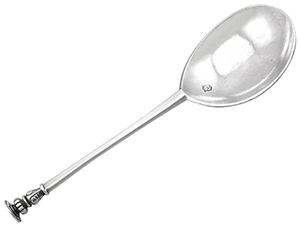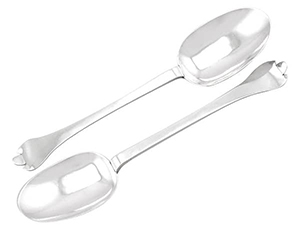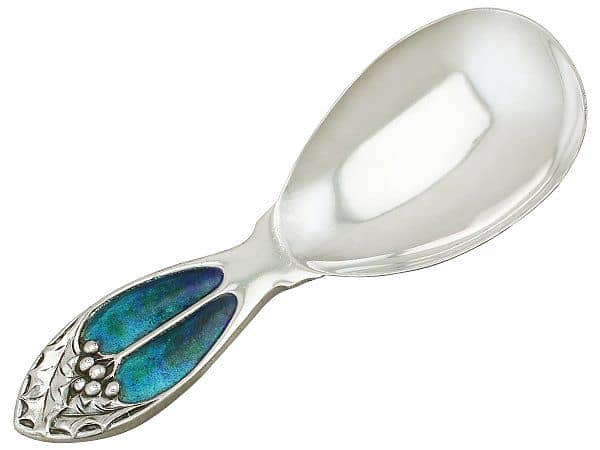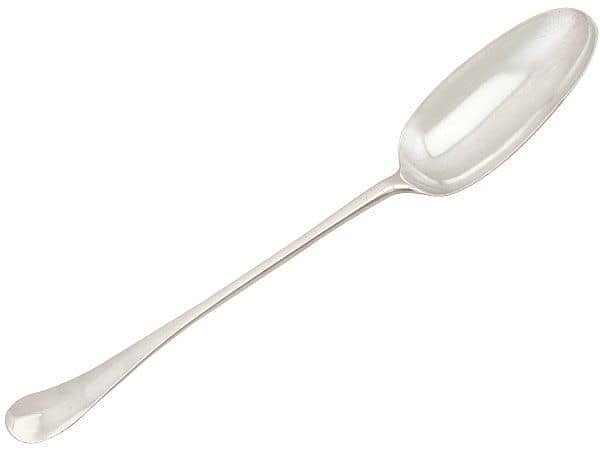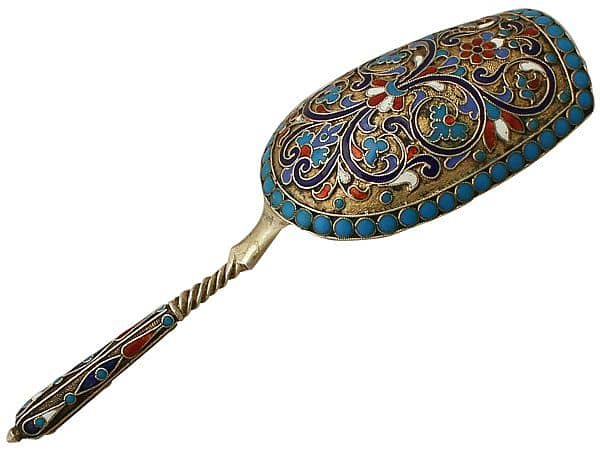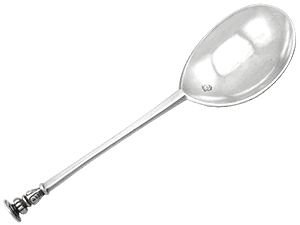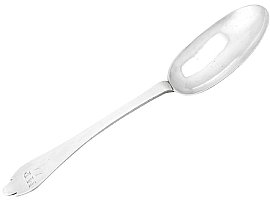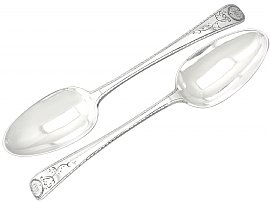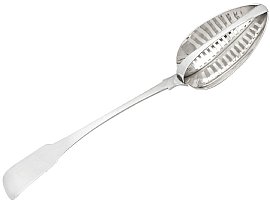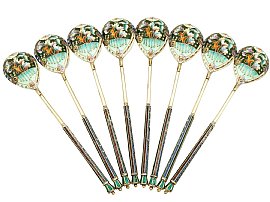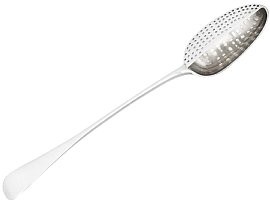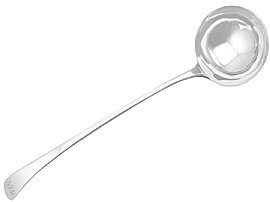History of the Spoon
The spoon is one of the most commonly used and most versatile utensils we have at our disposal. Its history is a difficult one to trace purely due to its vastness. It seems as if we have always had, used and depended upon spoons. Archaeological finds date the first spoon back to 1,000 BC. This specimen was likely to have been intended primarily for ornamental or religious uses.
In their pioneering tradition, the ancient Egyptians are known to have first used spoons made out of wood, flint and ivory. These spoons were impressive and ornate; perhaps also intended primarily for aesthetic purposes. They often depicted complex religious scenes on their bowl. These would have been illustrated through hieroglyphics and drawings.
Later, during the Greek and Roman empires, spoons were more frequently crafted in bronze and silver. As they were now made in higher value materials, they tended to be reserved for the upper classes. Upon the dawn of the medieval period in Europe (476 AD – 1492) spoons began to be crafted in horn, wood, brass and pewter. These specimens were more simple and understated than their predecessors. Concerning English history, the earliest mention of the spoon was in 1259, as part of the wardrobe accounts of Edward I.
It was not until the 15th century that the modest wooden spoons began to be replaced by metal examples. The craft began to be perfected during the Elizabethan period. At this point silversmiths would often choose to become specialists in crafting spoons. From a collector’s point of view, this period was one of the most important eras for silver spoons, as various pieces from this time survive today.
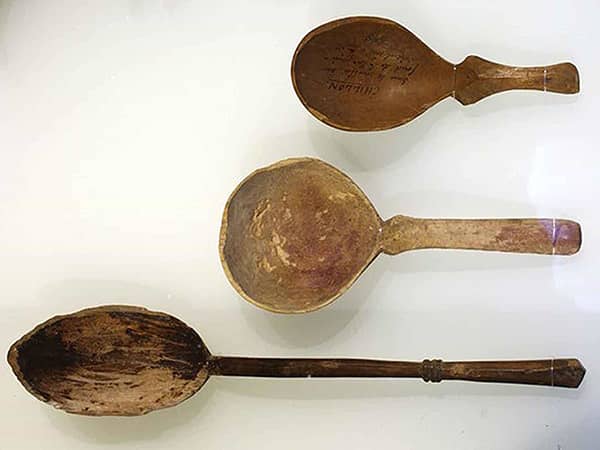
Rama [CC BY-SA 2.0 fr], via Wikimedia Commons
Traditional Spoon Types
Eating Utensils:
- Teaspoon – A small spoon used to stir and sip tea and is also a measure of volume of 5ml
- Tablespoon – Also a measure of volume and three times bigger than a teaspoon at 15ml. (often used to serve food)
- Dessert Spoon – The spoon between the teaspoon and tablespoon at 10ml, quite often used for not only desserts but also cereals.
- Soup Spoon - A large rounded bowl perfect for cupping liquids.
- Coffee Spoon – A spoon used for coffee cups, usually slightly smaller than the traditional teaspoon.
- Grapefruit Spoon - A tapering bowl that has a serrated edge to separate flesh from rind.
Serving/Kitchen Utensils:
- Wooden spoon – Ok, so not a member of the silver family, but who can deny this is a very popular spoon for stirring food during cooking.
- Ladle – A deeper bowl and a long handle that connects at a steeper angle to a normal spoon (the size of ladle is a topic for another day).
- Mustard Spoon – A small spoon with an elongated but deep bowl used to serve mustard.
- Salt Spoon – Similar to a mustard spoon but usually with a more circular bowl.
- Caddy Spoon – Used for measuring tea leaves, with a fairly short handle and comes in a wide range of shapes; quite often novelty examples can be found.
Alternative Situations
Types of Silver Spoons
Apostle Spoons: Perhaps the most popular spoons of the Elizabethan period were the ‘Apostle spoons’, with the oldest known being dated at 1493. These spoons were crafted in sets of 12 or 13, with the figure of one of the apostles (along with their emblem) surmounting each one. Many sets were broken up, but those with enough money would choose to own or gift an entire collection. Each of the 12 spoons served to represent one apostle. Sets featuring 13 would include either a ‘Master Spoon’ depicting Jesus Christ or a spoon depicting St. Paul.
It became common custom in Tudor days to gift a set (or a part set) of apostle spoons as a christening present. Sometimes only four pieces of the set would be given, to represent the four evangelists. This custom was established thoroughly within society; it was even referenced in literature of the time, a prime example can be seen in Shakespeare’s Henry VIII. The Tudors started the long running tradition to present a christening spoon that many still abide by today. Apostle spoons originated in Europe and many exceptional examples were crafted in Nuremberg, Paris, Milan and Madrid.
The Seal-Top Spoon: Contemporarily to Apostle spoons we can find the ‘Seal-top Spoon’. This type features a finial in the form of an ornamented seal, with a flat end. They often featured baluster ornament. Despite the supposed usefulness of this spoon type, there is no actual evidence to suggest that their finial was meant to be put to use, it was however a place where the spoon maker would engrave their initials. There is reason to believe that the seal shape is solely for aesthetic value.
This spoon style remained highly sought after throughout the majority of the seventeenth century, and many well-preserved examples from various regions of the country are still in existence today.
The Slipped-Stalk Spoon: This type of silver spoon originated during Charles I’s reign. The design initiated a change of bowl shape, from pear like to oval. During the 16th and 17 century, the bowl shape was relatively different from what we would recognise today. The spoons that we use are generally widest near the handle, tapering off into a rounded ‘point’. At this time however, the bowl of a spoon would have been the other way around; the narrowest part of the bowl would have been closest to the handle. The slip-stalk was also much more plain and understated compared to the more ornamented types that had come before. This could perhaps have been down to puritan religious reasons, or was perhaps purely economic.
The Trifid/ Trefid Spoon: The distinguishing feature of the trifid spoon is the split ended finial, which would be split into three parts. They would also often incorporate a bowl with rat tail support. This style was introduced around 1660, and was only a popular style until the early 1700s. As the style didn’t seem to be utilitarian, we can consider this shape as a passing fashion.
Souvenir Spoon: These spoons are not always crafted in silver, but are usually quite decorative and used to make note of a time or place.
Christening Spoon: A small spoon given to a newborn child as a gift, often in the form of a feeder spoon; a spoon with a loop handle. Current times have diminished some people”s views on presenting a single spoon at a christening due to the phrase “silver spoon” and the stereotypes associated with a child born to riches.
As the design of the spoon evolved, so did the hallmarking process. Pre-restoration, the leopards head hallmark, which signifies the assay office of London, could be found in the bowl of the spoon. During the reign of Charles II there was a traditional period of hallmarking. This meant that sometimes the bowls of spoons were still hallmarked, but sometimes the stems would be preferred. Often, there could be a mixture; the leopards head would be placed on the bowl but the other hallmarks would run up the stem. Around 1781, the hallmarking customs seemed to solidify. At this point the marks were all placed near the end of the handle rather than close to the bowl.
Today, we still use over 50 different types of spoons in preparing, cooking and eating food. In the past this number was even larger! There is no doubt that the spoon is a necessity, and has proved a vital instrument throughout history. Now that you’ve gained a bit of insight about its history, why not browse our collection of silver spoons to see some remarkable silver pieces for yourself?
